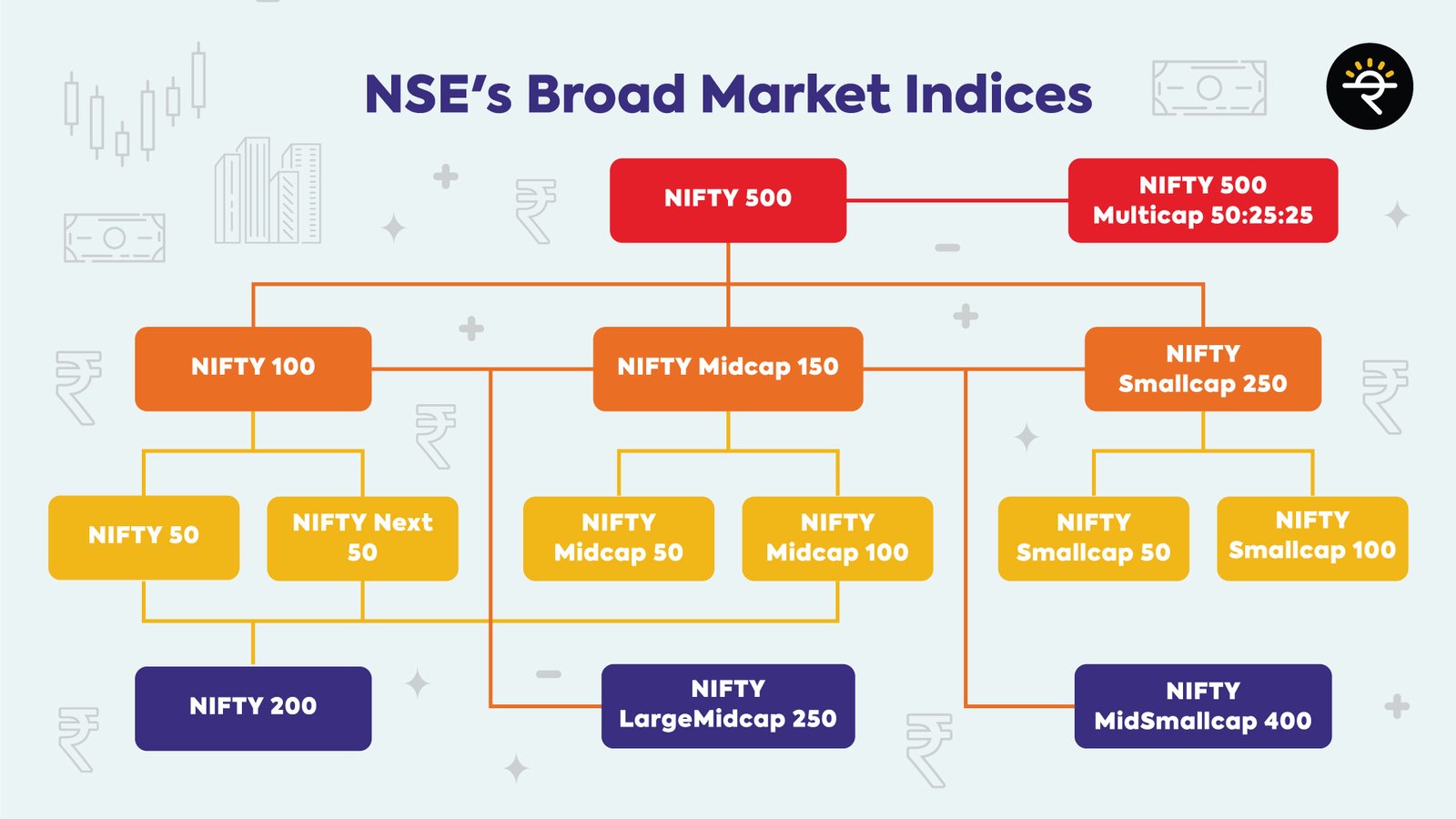Nifty 50 is one of the most popular stock market indices in India, representing the performance of the top 50 companies listed on the National Stock Exchange (NSE). It serves as a benchmark for the Indian equity market and provides investors with a snapshot of the overall market trends. Introduced in 1996, Nifty 50 includes companies from various sectors such as finance, IT, energy, healthcare, consumer goods, and more, ensuring a diversified representation of the Indian economy.
The term “Nifty” is a combination of “National” and “Fifty,” highlighting its role as a comprehensive gauge of the top 50 stocks on the NSE. These 50 companies are selected based on free-float market capitalization, liquidity, and sector representation. Free-float market capitalization means only the shares readily available for trading in the market are considered, excluding promoter holdings or government stakes. This ensures that the index accurately reflects market movements based on actively traded shares.
How Nifty 50 Works
Nifty 50 works as a market-weighted index, meaning that each company’s weight in the index is proportional to its market capitalization. Larger companies like Reliance Industries, HDFC Bank, and Infosys have a higher influence on the index movement compared to smaller companies in the list. As the stock prices of these companies fluctuate, the Nifty 50 index rises or falls accordingly, giving investors a clear picture of the market’s overall direction.

The index is continuously calculated in real-time during trading hours, allowing investors to monitor market trends closely. Nifty 50 is widely used for benchmarking mutual funds, exchange-traded funds (ETFs), and other investment products. It also forms the basis for derivative contracts like Nifty futures and options, enabling traders and investors to hedge risks or speculate on market movements.
Investing in Nifty 50 is considered a safer option for long-term investors because it provides exposure to a diversified portfolio of top-performing companies rather than relying on individual stocks. Mutual funds and ETFs that track the Nifty 50 index allow investors to benefit from the overall growth of the Indian stock market with relatively lower risk.
In conclusion, Nifty 50 is not just an index but a barometer of the Indian stock market. Understanding how it works helps investors make informed decisions, track market performance, and participate in the growth of India’s economy effectively.
Evolution from Barter System to Money
Multi Level Money Marketing Legal in India
Auction Website Design And Development
![]()





